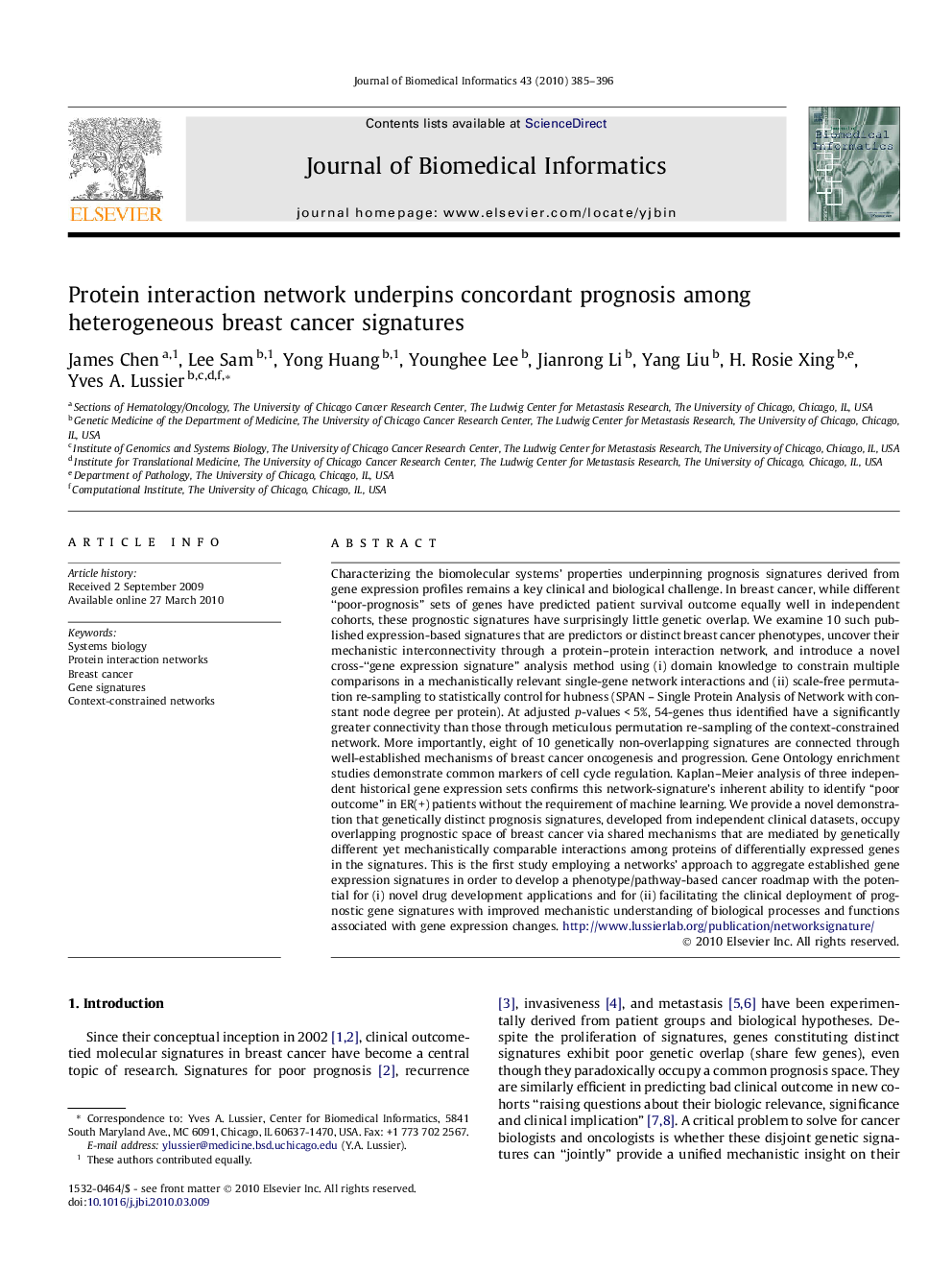| Article ID | Journal | Published Year | Pages | File Type |
|---|---|---|---|---|
| 10356173 | Journal of Biomedical Informatics | 2010 | 12 Pages |
Abstract
Characterizing the biomolecular systems' properties underpinning prognosis signatures derived from gene expression profiles remains a key clinical and biological challenge. In breast cancer, while different “poor-prognosis” sets of genes have predicted patient survival outcome equally well in independent cohorts, these prognostic signatures have surprisingly little genetic overlap. We examine 10 such published expression-based signatures that are predictors or distinct breast cancer phenotypes, uncover their mechanistic interconnectivity through a protein-protein interaction network, and introduce a novel cross-“gene expression signature” analysis method using (i) domain knowledge to constrain multiple comparisons in a mechanistically relevant single-gene network interactions and (ii) scale-free permutation re-sampling to statistically control for hubness (SPAN - Single Protein Analysis of Network with constant node degree per protein). At adjusted p-values < 5%, 54-genes thus identified have a significantly greater connectivity than those through meticulous permutation re-sampling of the context-constrained network. More importantly, eight of 10 genetically non-overlapping signatures are connected through well-established mechanisms of breast cancer oncogenesis and progression. Gene Ontology enrichment studies demonstrate common markers of cell cycle regulation. Kaplan-Meier analysis of three independent historical gene expression sets confirms this network-signature's inherent ability to identify “poor outcome” in ER(+) patients without the requirement of machine learning. We provide a novel demonstration that genetically distinct prognosis signatures, developed from independent clinical datasets, occupy overlapping prognostic space of breast cancer via shared mechanisms that are mediated by genetically different yet mechanistically comparable interactions among proteins of differentially expressed genes in the signatures. This is the first study employing a networks' approach to aggregate established gene expression signatures in order to develop a phenotype/pathway-based cancer roadmap with the potential for (i) novel drug development applications and for (ii) facilitating the clinical deployment of prognostic gene signatures with improved mechanistic understanding of biological processes and functions associated with gene expression changes. http://www.lussierlab.org/publication/networksignature/
Related Topics
Physical Sciences and Engineering
Computer Science
Computer Science Applications
Authors
James Chen, Lee Sam, Yong Huang, Younghee Lee, Jianrong Li, Yang Liu, H. Rosie Xing, Yves A. Lussier,
